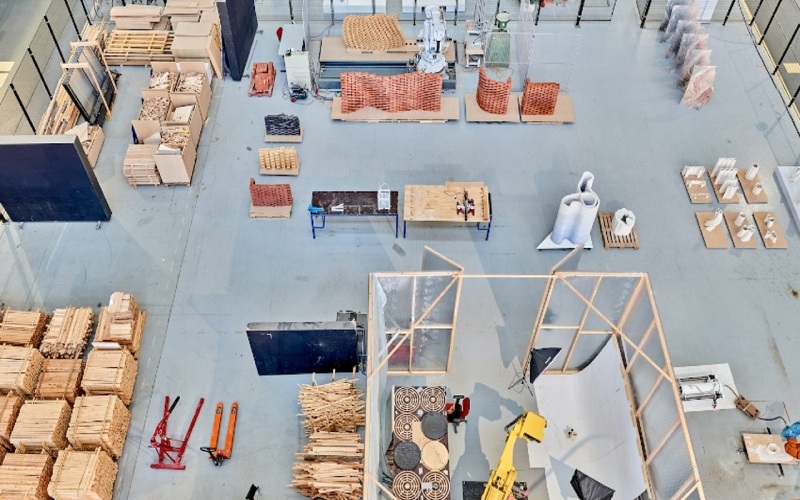
How Is 3D Printing Technology Revolutionizing Architectural Design?
Crafting with the help of 3D printing has entered various spheres and industries relatively quickly, and it touched spheres such as healthcare, automotive, and fashion. Nevertheless, that aspect is most significant when people research and assess the architecture field. This technology allows architects to extend the possibilities of conventional design and building processes, introducing fresh ideas for the design and construction of structures. Now, let us discover how the best 3D printing technology impacts architectural design.
Enhancing Design Creativity
The use of 3D printing in construction makes it easier for architects to come up with structures with complicated shapes and detailed patterns due to the restrictions of conventional production as a way of creation. The innovative freedom allowed by this game is to create complex forms, ranging patterns, and structures without the restriction of the real world and physical limitations of architectural designs. This capability is especially applicable in the design of one-off parts and marginal contours, which results in a high degree of freedom in architectural designs.
Rapid prototyping and Model-making
Another shade of the benefit of a 3D printer in architecture is that it allows architects to create scale models in a short time with great accuracy. Rapid prototyping is an innovative technology that means the production of physical versions of the designs in less time when compared to other conventional approaches. This not only increases the efficiency of building designs but also gives another form and understanding of a building to the architect, clients or other interested persons. The extent to which conceptual ideas can be gone through iteratively and quickly also improves the decision-making process regarding design and prevents possible design alterations during construction.
Customization and Personalization
The 3D print freedom and versatility enable building parts and features to be built to various and specific designs. Publications and promotions These elements can include, but are not limited to; custom façade features, custom interior fixtures, and custom fittings. In particular, customization is revered when an aesthetic or functional solution is needed for a specific project. Also, 3D printing can produce pieces that would be time-consuming or costly to make with conventional fabrication techniques, including complex edges, intricate decorating elements, or complex structures of furniture.
Cost and Material Efficiency
The costs of material waste and hiring laborers to complete the task are decreased when 3D printing is used in product development. Conventional construction processes require the use of raw materials in a way that they are cut or shaped to fit the particular needed form, and this causes significant amounts of wastage. As opposed to this, where 3D printers lay down the material layer by layer in the required method and thickness only. This process of manufacturing adds material only where it is required and thus the maximum utilization of material is achieved. Furthermore, as 3D printing becomes more automated, the need for skilled personnel declines as well, further reducing costs. It is evident in large-scale projects or where expensive materials are used, this reduces overall cost.
Sustainability and Environmental Impact
There are high concerns for sustainability in the building and architectural industry and 3D printing has the following advantages. Less material usage in an object and the possibility to utilize environment-friendly or recycled material also have made 3D printing advantageous to the environment. Furthermore, 3D printing can aid in the creation of additional buildings and energy-efficient constructions. For instance, it makes it possible to design complicated forms of buildings that can effectively allow for natural light, ventilation, and control of the environmental dispersion to lessen the energy consumption by the building. The technology also permits the elaboration of light structures with low mass that need a reduced amount of material and energy to be manufactured and transported.
Innovation in Construction Methods
Now it is equally exciting and evident that industrial 3D printer companies have quickly changed not only the design phase of construction but also the construction technique. Components of specific buildings can be built using Industrial 3D printers and parts like walls, facades, certain sections of the building and so on can be printed on site directly. This kind of facility is called construction 3D printing and has significant advantages such as lesser construction duration, expenses towards labor, and construction materials. It also assists in the precise measurement and hence, accuracy in the construction process to be accomplished.
Challenges and Future Prospects
For all the benefits of 3D printing, there are relevant problems that have to be solved to see more of this technology in architectural practice. A common issue that can be stated is that there are dimensional limits to objects that can be produced using 3D printers presently. However, this has been a great challenge due to the lack of funds to finance the construction projects. Nevertheless, better fortunes are being witnessed in this aspect due to the large-scale 3D printing and the use of modules in construction. Another difficulty is the cams for 3DP equipment and material which might be costly, particularly for extensive projects. But again as the technology advances and more people adopt the technology, the costs are believed to drop.
3D in architecture appears to have a promising future. It is therefore expected that with progress in 3D printing technology, materials and methods, 3DP will have more prospects and values in the architecture field. The possibility of adding more artificial intelligence and machine learning into the processes of 3D printing can also help improve the design and construction phase even more. In the same way, advanced materials that include biocompatible and self-healing materials can unlock new possibilities for sustainable and resilient buildings that can be achieved likewise through 3D Printing.
Conclusion
Leaning forward, 3D printing is enabling innovation in architecture by advancing creativity, producing prototypes faster than ever, enabling customization, and optimizing both material and cost. And it provides great sustainability advantages and is revolutionizing construction. There are still issues with the current state of the architectural application of 3D printing but it is expected to grow and significantly alter the approach of designing and creating structures in the future. As with any rapidly developing technology, architects and builders will be armed with additional tools to usher in a new era of architecture marked by inventive, sustainable, and energy-efficient structures.


